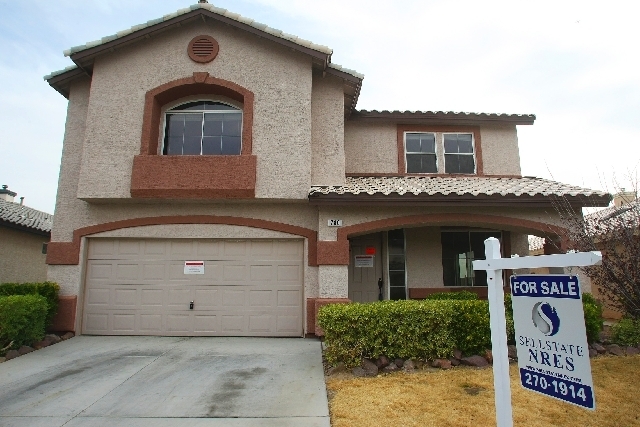Las Vegas Valley’s share of underwater housing continues to decline
The high tide of Southern Nevada’s housing recession continued to ebb in the third quarter.
New numbers from real estate website Zillow showed that the Las Vegas Valley’s share of homes that are under water, or worth less than the mortgage owed on them, waned significantly in the three months that ended in September.
Local negative equity fell to 39.6 percent, down from 48.4 percent in the second quarter and well below a peak of 71 percent in the first quarter of 2012, Zillow reported. About 105,000 area homes have been freed from negative equity since the high point, though 132,000 area homes were still under water in the third quarter. The city’s negative equity totaled $12.4 billion.
In the Las Vegas metro area, North Las Vegas had the highest share of underwater homes, at 47 percent.
The steep drop in negative equity has important economic implications, said Bryan Kyle, owner and broker-manager of First-Serve Realty in Las Vegas.
“Everybody buys their home assuming it’s going to be the biggest investment of their lives, and when it turns out it’s not, it can be a really depressing situation,” Kyle said. “A home’s value affects all of a family’s financial decisions, down to whether they’ll eat out this week, or whether the kids go to private preschool again next year, or even what kind of Christmas it’s going to be.”
Kyle said his clients are definitely benefiting from rising home equity. He gets “more and more calls every week” from people who can finally afford to sell.
But plenty of local homeowners could be in over their heads for years to come. Zillow forecasts a negative equity rate in Las Vegas of 33.3 percent a year from now.
With recent spikes in local home prices set to slow down, people who bought at peak pricing in 2006 and 2007 may have to wait for close to a decade before values rise enough to give them equity, Kyle said.
“It’s still a big problem. We all know, despite all the wonderful things we’ve been reading about the market, that there’s this percolating issue underneath it all,” Kyle said. “There are still a lot of people under water, and they know it.”
Contact reporter Jennifer Robison at jrobison@reviewjournal.com. Follow @J_Robison1 on Twitter.






















